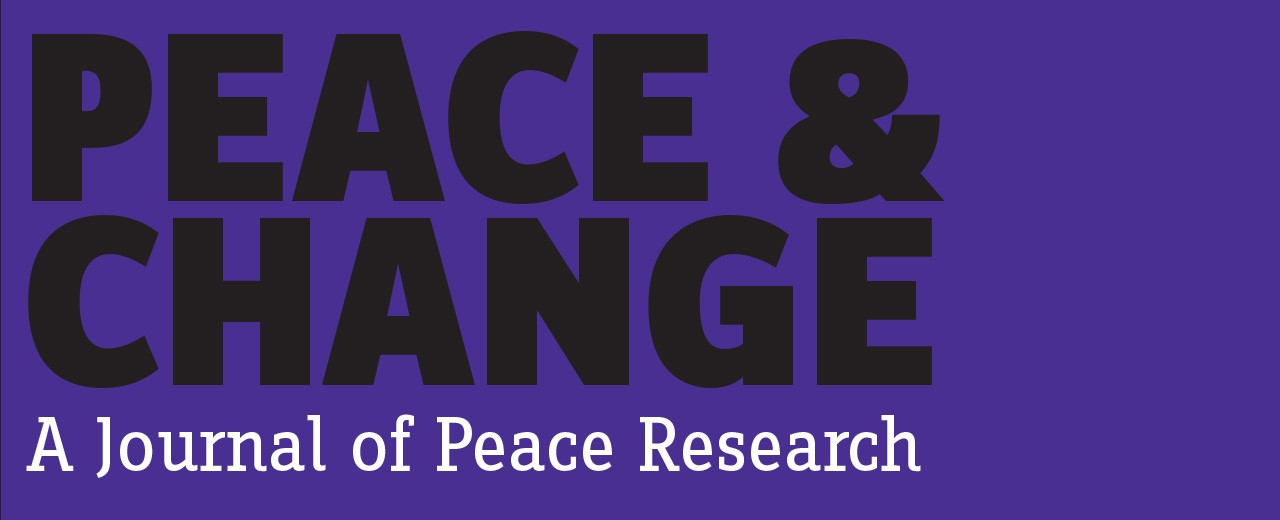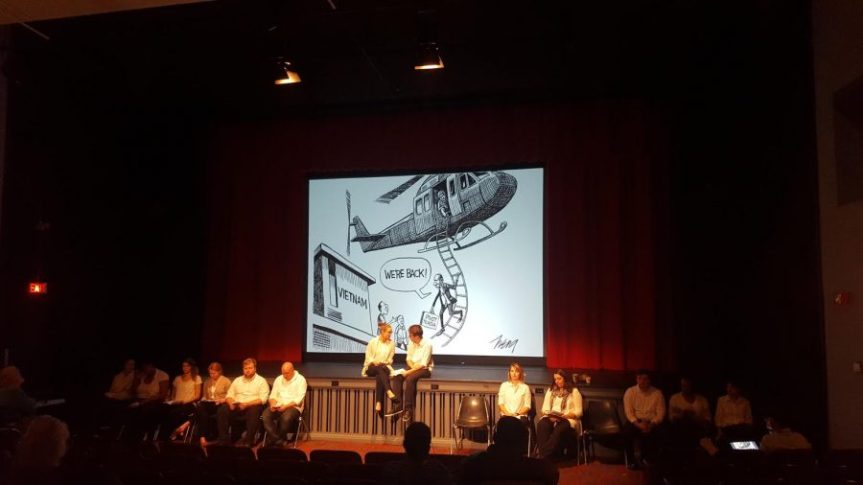By Lawrence Wittner
The looming advent of the Trump administration in Washington threatens to worsen an already deeply troubling international situation. Bitter wars are raging, tens of millions of refugees have taken flight, relations among the great powers are deteriorating, and a new nuclear arms race is underway. Resources that could be used to fight unemployment, poverty, and climate change are being lavished on the military might of nations around the world―$1.7 trillion in 2015 alone. The United States accounts for 36 percent of that global total.
Given this grim reality, let us consider an alternative agenda for the new administration―an agenda for peace.
One key ingredient is improving U.S. relations with Russia and China. This is not an easy task, for these countries are governed by brutal regimes that seem to believe (much like many politicians in the United States) that a display of military force remains a useful way to deal with other nations. Even so, the U.S. government has managed to work out live-and-let-live relationships with their Soviet and Chinese predecessors―some of which were considerably more bellicose―and should be able to do so again. After all, the three countries have a good deal to gain by improving their relations. This includes not only avoiding a catastrophic nuclear war, but reducing their spending on useless, vastly expensive weapons systems and cooperating on issues in which they have a common interest: countering terrorism; halting the international drug trade; and battling climate change.
It is not hard to imagine compromise settlements of their recent conflicts. Behind the hard line Russia has taken in Ukraine, including the annexation of Crimea and military meddling in what’s left of that country, lies NATO’s expansion eastward to Russia’s borders. Why not show a willingness to halt that expansion in exchange for a Russian agreement to respect the sovereignty of Ukraine and other nations in Russia’s vicinity? Similarly, when dealing with the issue of war-torn Syria, why not abandon the U.S. government’s demand for the ouster of Assad and back a UN-negotiated peace settlement for that country? The U.S. government’s growing dispute with China over the future of islands in the South China Sea also seems soluble, perhaps within a regional security framework.
The three nations could avoid a very dangerous arms race and, at the same time, cut their military costs substantially by agreeing to reduce their military expenditures by a fixed percentage (for example, 10 percent) per year for a fixed period. This “peace race” would allow them to retain their current military balance and devote the savings to more useful items in their budgets.
A second key ingredient in a peace agenda is moving forward with nuclear arms control and disarmament. With over 15,000 nuclear weapons in the arsenals of nine nations, including 7,300 held by Russia and 7,100 by the United States, the world is living on the edge of nuclear annihilation.
Although the Kremlin does not seem interested right now in signing further nuclear disarmament agreements, progress could be made in other ways. The President could use his executive authority to halt the current $1 trillion nuclear “modernization” program, take U.S. nuclear weapons off alert, declare a “no first use” policy for U.S. nuclear weapons, and make significant reductions in the U.S. nuclear arsenal. An estimated 2,000 U.S. nuclear warheads are currently deployed and ready for action around the world, but the Joint Chiefs of Staff have concluded that only 1,000 are necessary. Why not cut back to that level?
The new administration could even engage in international negotiations for a treaty banning nuclear weapons. Peace and disarmament organizations have pushed for the opening of such treaty negotiations for years and, this October, the UN General Assembly rewarded their efforts by passing a resolution to begin negotiations in 2017. Why not participate in them?
A third key ingredient in a peace agenda is drawing upon the United Nations to handle international conflicts. The United Nations was founded in 1945 in the hope of ending the practice of powerful countries using their military might to bludgeon other countries into accepting what the powerful regarded as their national interests. National security was to be replaced by international security, thereby reducing aggression and military intervention by individual nations. Critics of the United Nations have argued that it is weak and ineffectual along these lines and, therefore, should be abandoned―except, perhaps, for its humanitarian programs. But, instead of abandoning the United Nations, how about strengthening it?
There are numerous ways to accomplish this. These include eliminating the veto in the Security Council, establishing a weighted voting system in the General Assembly, and giving General Assembly decisions the force of international law. Two other mechanisms, often discussed but not yet implemented, are creating an independent funding mechanism (such as an international financial transactions tax) for UN operations and establishing a permanent, all-volunteer UN rapid deployment force under UN jurisdiction that could act to prevent crimes against humanity.
Of course, at the moment, little, if any, of this peace agenda seems likely to become U.S. government policy. Donald Trump has promised a substantial increase in U.S. military spending, and his new administration will be heavily stocked with officials who take a hardline approach to world affairs.
Even so, when it comes to peace, the American public has sometimes been remarkably active―and effective. In January 1981, when the Reagan administration arrived in Washington, it championed an ultra-hawkish agenda, highlighted by a major nuclear weapons buildup and loose talk of waging and winning a nuclear war. Ultimately, though, an upsurge of popular opposition forced a complete turnabout in administration policy, with Reagan joining the march toward a nuclear-free world and an end to the Cold War. Change is always possible―if enough people demand it.
[Dr. Lawrence Wittner (http://www.lawrenceswittner.com) is Professor of History emeritus at SUNY/Albany and the author of Confronting the Bomb (Stanford University Press). A different version of this article appeared recently in the magazine Democratic Left.]



